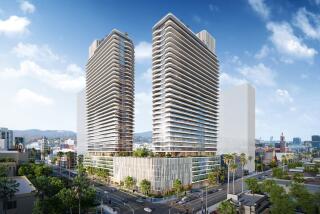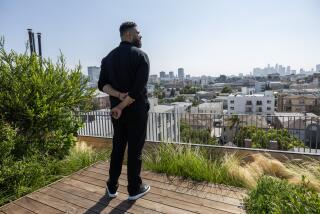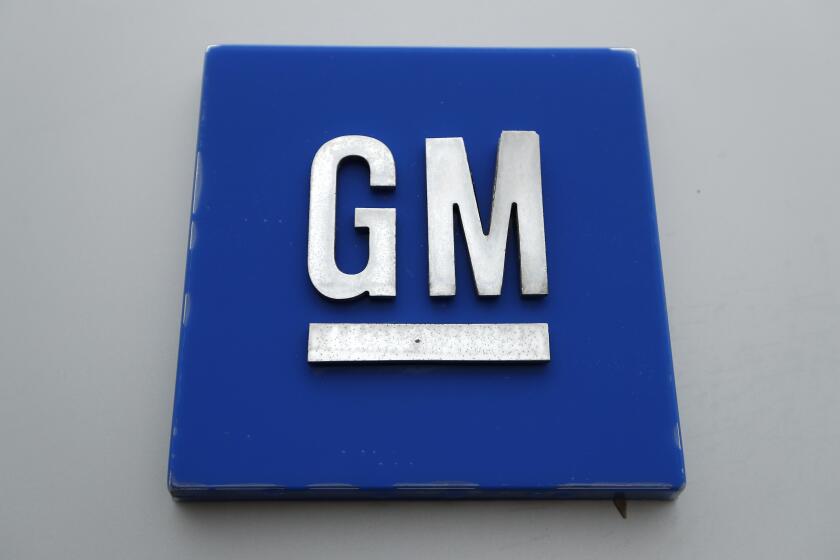On a Crenshaw Boulevard corner, old gives way to new, but it stays in the family

- Share via
The corner lot on Crenshaw Boulevard and 54th Street looks like any other construction site. Inside the chain-link fence encircling the property, an excavator last week was moving a pile of rubble — the last remains of an old building that had been demolished to make room for something new.
But the mundane scene belied an unusual story in Los Angeles real estate: Instead of selling it, a Black family with deep roots in South L.A. chose to hold on to a property they’ve owned for decades and develop it themselves into a $24-million apartment and retail building.
They’ll mark their progress with a formal groundbreaking ceremony Thursday, a rare instance of a local, minority property owner participating in the redevelopment of their neighborhood, which had long been overlooked by conventional developers. In keeping a seat at the table, they are bucking the norms for how development in L.A. typically is done, in which owners sell to outside developers looking to capitalize on the rising fortunes of once-neglected historic neighborhoods.
But even with a train stop for Metro’s new light rail K line nearby, funding for the project was hard to come by. It took years of effort before siblings Jamial Clark and Bridgette Reed, who inherited the property from their parents, could start turning their mother’s former hair salon and wig shop property into a six-story building with 48 apartments and perhaps a small grocery store in the first-floor retail space.
The grind, they said, has been worth it. Their parents, Henry and Lucretia Clark, scraped together money in 1995 to buy the building and the siblings didn’t want to let go of it. Perhaps, they said, they will provide a road map to others who own properties in evolving neighborhoods near the many new transit lines being built and planned by Metro.

“There are a lot of Black-owned properties up and down Crenshaw,” Reed said. “We just want to encourage other families to do the same thing and not sell out to these developers who are coming in and actually pricing us out of our own communities.”
Key to getting their project underway was teaming with developer Kacy Keys, who has spent nearly three decades building commercial projects including apartments, offices and stores. She heads Praxis Development Group, which will have an equity stake in the project, which is named Clark on 54th.
“We were responsible for playing the developer role,” Keys said of her company, such as getting city construction approvals, overseeing the design, hiring contractors and finding financing. The Clarks “agreed to contribute their land into a joint venture with us.”
Both Praxis and the Clarks had to put up cash for the last few years to make sure the project didn’t falter, which was worrying, Jamial Clark said.

“I invested over $100,000 of my money just to keep things going,” he said, “and to keep bills paid and the mortgage paid,” but he and his sister didn’t want to let go of the property their parents toiled over and where they spent many hours of their young lives.
“Selling was never going to be an option, even though we got to a point where we had to think about it” as rising interest rates and inflation drove the potential cost of the project so high it looked out of reach, Clark said.
The pair attended nearby 54th Street Elementary School and after classes they walked to their mother’s salon, where they pitched in answering the phone.
“It was like our second home,” Reed said, a place with a nurturing vibe that encouraged customers to linger and chat.
“Mom was old-school press-and-curl,” she said, referring to a popular hairstyle in the 1990s. “My mom was taking out those weaves and regrowing their hair.”
The salon had a private area where women with thinning hair could get scalp treatments that included massages from their late beautician sister Carla Taylor and oils formulated by their mother.
“It was almost like a counseling session,” she said. “The ladies would stay after they got their hair done and order lunch.”

On Saturdays their mom played such “old” music as the Temptations, Al Green and the Whispers, she said. “The ladies would just love to come and sit.”
Her tenants in the building included the wig shop with a celebrity clientele, a shoe repair shop, a frame shop and a social services provider, all of which relocated in the neighborhood, Clark said.
Some neighbors were apprehensive about the plan to knock down a building infused with emotions and memories for so many, but Clark saw an opportunity to be part of potential economic changes coming to the area. In West Adams, another historically black community, development of new apartments, restaurants and shops was already taking place on Adams Boulevard.
“I was like, ‘Wow, Crenshaw should be comparable to that, at least.’”
In the 1920s and 1930s, Central Avenue was the center of L.A.’s black community. Later, the center shifted to the Crenshaw Corridor, particularly between Adams and Slauson Avenue, said real estate developer Philip Hart, who is familiar with the plans for Clark at 54th but not involved in the project.
Lately, the multibillion-dollar public investments in Metro’s Crenshaw line and the Expo line that intersects it “have had a ripple effect in terms of the communities they serve becoming desirable,” Hart said.
That economic shift puts pressure on local residents, he said. “Can they continue to pay their rent or their property taxes? The question of gentrification and displacement has become a very important question in the Crenshaw District over the past 10 years or so.”
If redevelopment doesn’t bring with it affordable housing and good-paying jobs, residents will be priced out of their neighborhoods and join a long-running exodus to Palmdale, Lancaster and the Inland Empire, where the cost of living is cheaper, he said.
The Crenshaw community, Hart said, “should retain its historic African American cultural cachet.”
Keys and the Clarks hope their project will play a small part in keeping the neighborhood intact. The building will include 10 units considered “deeply affordable” because they are reserved for tenants earning 50% of the median income in the area when they become available in late 2026.
The apartments will be bigger than average, including two- and three-bedroom units to accommodate families, said Keys, who is working on the project with her partner Charles Wise.

One of the biggest challenges to getting the project underway was finding financing. A building that size typically would be funded with a loan or two, but Keys had to assemble a complicated package from seven entities including philanthropic nonprofits after approaching about 100 financing sources.
“Even though I’ve built over a billion dollars’ worth of projects over the course of my career, this was my first time as a small woman-led business that I was raising money on my own,” Keys said. “It was incredibly challenging.”
Praxis put up more than $200,000 of its own funds and worked without compensation to prove that partnering with legacy landowners to create new housing can work, she said.
Among the financiers was MSquared, a women-owned real estate development and investment firm that will retain an equity share, as will New York investment and development firm Six Peak Capital.
The need to secure financing from multiple sources dragged out the process, but the effort was worth it, Hart said.
“What they’ve done was challenging, but they’ve done it and they’re having a groundbreaking,” he said. “That’s a good thing.”
More to Read
Inside the business of entertainment
The Wide Shot brings you news, analysis and insights on everything from streaming wars to production — and what it all means for the future.
You may occasionally receive promotional content from the Los Angeles Times.











